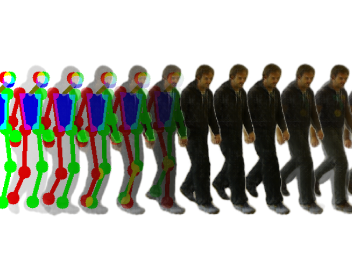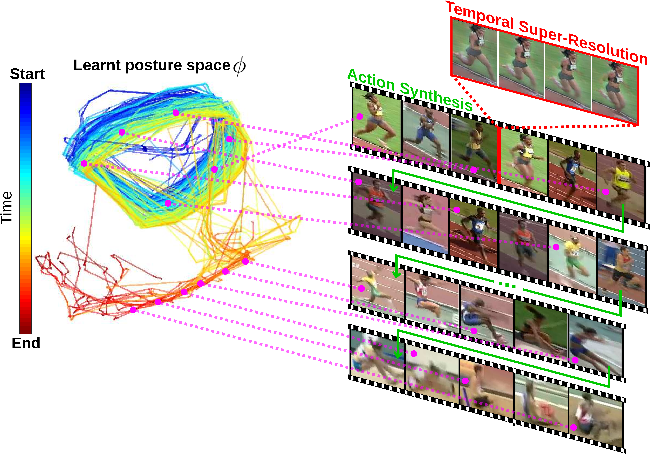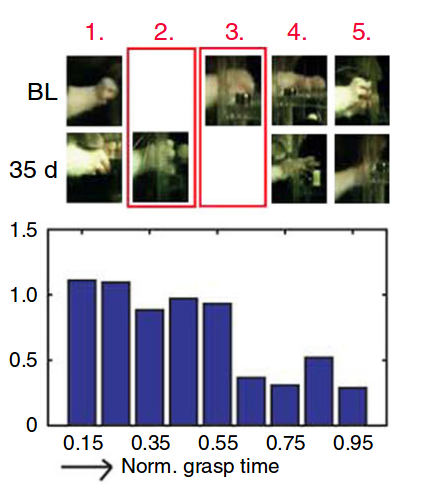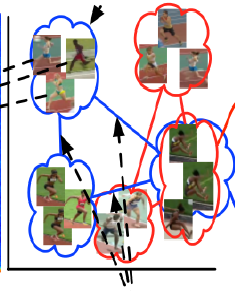Current Research Themes
Previous Selected Projects
 |
A Variational U-Net for Conditional Appearance and Shape Generation (2018) Deep generative models have demonstrated great performance in image synthesis. However, results deteriorate in case of spatial deformations, since they generate images of objects directly, rather than modeling the intricate interplay of their inherent shape and appearance. We present a conditional U-Net for shape-guided image generation, conditioned on the output of a variational autoencoder for appearance. Read more |
 |
A Style-Aware Content Loss for Real-Time HD Style Transfer (2018) Recently, style transfer, where a realistic input photograph is rendered in an artistic style, has received a lot of attention. Much research has aimed at speeding up the stylization process, but, from an art historical perspective, these approaches are still lacking, for example, while an artistic style can only be fully represented in multiple instances, previous works only utilize one style image. Our work addresses issues and proposes a style-aware content loss, trained jointly with a deep encoder-decoder network for real-time, high-resolution stylization of images and videos. Read more |
 |
Towards Learning a Realistic Rendering of Human Behavior (2018) Realistic rendering of human behavior is of great interest for applications such as video animations or virtual reality. Commonly animations of persons performing actions are rendered by articulating explicit 3D models based on sequences of coarse body shape representations simulating a certain behavior; these models are mainly designed in a manual, laborious process or reconstructed using costly data. We present an approach towards a holistic learning framework for rendering human behavior in which all components are learned from easily available data. Read more |
 |
Unsupervised Video Understanding by Reconciliation of Posture Similarities (2017) Understanding human activity and being able to explain it in detail surpasses mere action classification by far in both complexity and value. The challenge is thus to describe an activity on the basis of its most fundamental constituents, the individual postures and their distinctive transitions. Read more |
 |
Automatic Behavior Analysis (2017) Current neuromodulatory strategies to enhance motor recovery after stroke often target large brain areas non-specifically and without sufficient understanding of their interaction with internal repair mechanisms. Here we developed a novel therapeutic approach by specifically activating corticospinal circuitry using optogenetics after large strokes in rats. Read more |
 |
Deep Unsupervised Similarity Learning (2017) Deep learning of similarities is often based on relationships between pairs or triplets of samples. Many of these relations are unreliable and mutually contradicting, implying inconsistencies when trained without supervision information that relates different tuples or triplets to each other. To overcome this problem, we use local estimates of reliable (dis-)similarities to initially group samples into compact surrogate classes and use local partial orders of samples to classes to link classes to each other. Read more |
 |
CliqueCNN Deep Unsupervised Exemplar Learning (2016) Exemplar learning is a powerful paradigm for discovering visual similarities in an unsupervised manner. With only a single positive sample, a great imbalance between one positive and many negatives, and unreliable relationships between most samples, training of CNNs is impaired. Given weak estimates of local distance we propose a single optimization problem to extract batches of samples with mutually consistent relations. Read more |
| Randomized Max-Margin Compositions Read more |
| Voting by Grouping Dependent Parts Read more |
| Beyond Straight Lines - Object Detection Using Curvature |
| Video Parsing for Abnormality Detection |
| Contour-based Object Detection Read more |
| Max-Margin Regularization for Chamfer Matching Read more |
| Visual Recognition using Embedded Feature Selection for Curvature Self-Similarity Read more |
| From Meaningful Contours to Discriminative Object Shape Read more |


